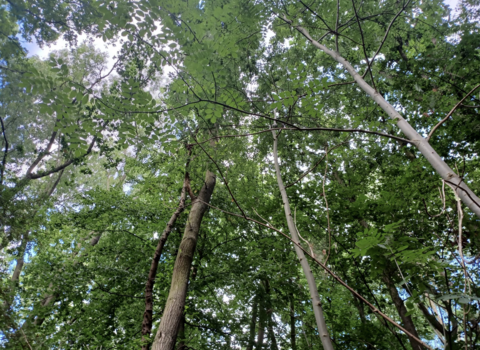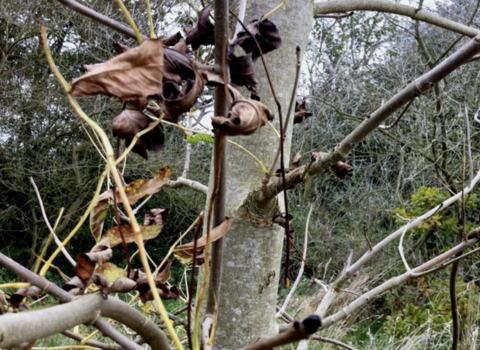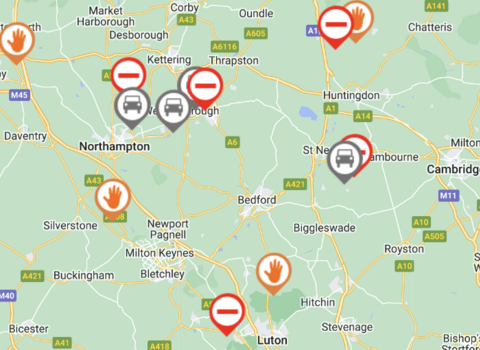Significant work taking place in Waresley & Gransden Woods means restricted access - Browne's Piece and the car park will remain open. Once work at W&G is complete Gamlingay Wood will close but for a shorter time span, 4-6 weeks; work is contractor dependent so no specific dates.
One of the primary reasons is safety while works are ongoing - to avoid the risk of trees falling on people, and potential collisions with machinery. The work is for a combination of greater accessibility, habitat improvement, and health and safety reasons: in the short term it will dramatically change the look and feel of parts of the woodland, and may appear destructive, but we want to reassure visitors that it has been very carefully planned by our experienced staff in partnership with the Forestry Commission and Natural England, and is vital to enable future access, and to maintain and improve this important ancient woodland.
The work falls into four main areas
Re-profiling the main ride This work has already started - the aim is to enable better drainage, so that the path will stay more vegetated and less muddy. The section of the main ride which is currently closed may remain so for a further six months, at which point another section will be restored. The prolonged closure is to allow the vegetation to fully recover and so become more resistant to trampling.
Widening the rides Coppicing will be used to open up the main ride (and another that leads from this one), making it much wider than before. This will help create greater structural diversity in the wood (areas where there is vegetation at different heights and density) to benefit a range of wildlife.
Ash removal A strip running along the south side of the stream has a high proportion of ash trees: these are being affected by ash dieback disease much more quickly than expected. The path along the river is heavily used and in order to make it safe, many of the dying trees will be removed. Some areas will be allowed to naturally regenerate and some will be replanted with trees appropriate to the wood such as oak and field maple.
Canopy thinning A diverse woodland has a balance of difference aged trees. In some areas, the wood is a plantation and the trees are all similar ages. Some of these areas will be thinned to allow younger trees to grow and therefore create greater structural diversity.
Reducing impact
· Where safe, some ash will be left in case there is a chance of resistance to ash dieback disease
· Low ground pressure machinery and brash mats will be used to minimise ground compaction
· Routes will seek to minimise impacts to woodland soils and plants, avoiding the richest and most sensitive areas of ground flora and historic features
· Vehicle access during wet conditions will be minimised to prevent rutting
· There will be a machinery exclusion zone around the badger sett
· Felling and coppicing will not occur during the main breeding bird season (April to July)
The work will depend on the weather and so will be not be set dates; please keep up to date with the access via the reserves page of Know Before You go page below



